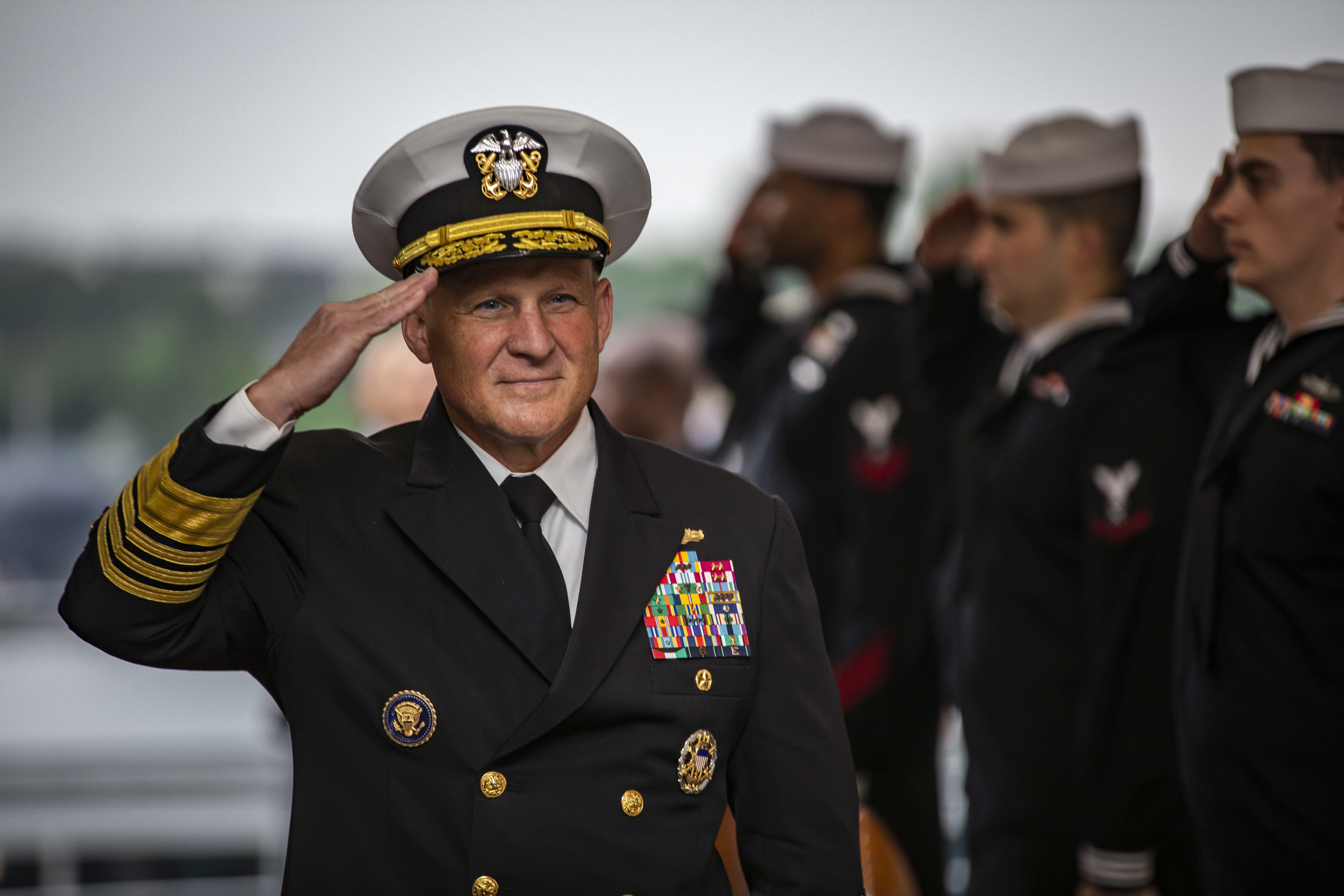
WASHINGTON NAVY YARD — Finland and Sweden joining the NATO alliance would fundamentally alter naval strategy and operations in the Baltic Sea and Arctic Basin, the heads of the French and American navies said today.
Because the two Nordic nations – which have officially applied for NATO membership – already work closely with NATO countries, their shift to joining the alliance would likely be “seamless,” Chief of Naval Operations Adm. Mike Gilday told reporters.
“They’re high-end operating militaries that have worked with us for a long time in very close partnership. So their transition into NATO is – I would predict – is going to be virtually seamless in the military dynamic. I think about the Arctic Basin and I think about the real estate that their coastline [has] along the Arctic Basin,” Gilday said.
“And so I think that in the future, as we see the polar ice cap receding, we see trade routes between Asia and Europe change, and competition for resources get more competitive in that area, I think that’s an example where Sweden and Finland – where we leverage their geostrategic position in a powerful way for the good of many.”
French Navy Chief of Staff Adm. Pierre Vandier pointed to a potential new NATO border with Russia should Finland and Sweden join the alliance and said the effect climate change could have on sea routes in the Arctic.
“It’s a huge strategy change for northern Europe and so the strategy in the Baltics will change because there is a continuity of NATO, which now has a new border with Russia. And considering the Great North – the climate change will open routes and probably we’ll see more and more activity in the [Great] North, perhaps we will see one day [a] fleet crossing from the Pacific to the Atlantic. And so it is for Europe a major strategy change,” Vandier said.
In a trip to the United States this week, Vandier said he had the chance to see Silicon Valley and visit San Diego, Calif., where he saw the U.S. Navy’s USS Zumwalt (DDG-1000) and the unmanned surface vehicles based there.
À San Francisco et à San Diego, je suis allé à la découverte de la « tech 🇺🇸 » pour comprendre quelles sont les technologies qui vont peser dans la guerre navale de demain. pic.twitter.com/aHHhZ2vlQ1
— Chef d'état-major de la Marine (@CEMM_FR) June 22, 2022
Vandier said the French Navy is also pursuing unmanned systems, though it’s not as far along in development as the U.S. Navy.
“All the countries are working on unmanned issues. It requests a huge amount of money, especially for surface unmanned ships. We are going to unmanned ships for mint hunting and so the first system would be operational at the end of the year in France,” he said. “We don’t have [those] overseas big ships, which are able to do 10,000 miles autonomously. But we are working on it and what we’ve seen is very interesting.”
Following his trip to Silicon Valley, Vandier said the technology there is one of the U.S. Navy’s main advantages, as it’s focused on “data-centric operations” and the cloud.
“It is something I think Europe is late on and we need to make the good choice in the future to be interoperable in managing huge amounts of data,” he said.
Speaking to reporters at the same event, Gilday emphasized the importance of interoperability and interchangeability between the French and U.S. navies.
“I think that the cooperation we’ve seen across NATO during this Russia-Ukraine crisis, and the sharing of information, intelligence from the United States, has also given us momentum to break down barriers and trade information and technology with our close partners like the French. We have to,” he said.
For example, Gilday said the U.S. Navy’s fourth and fifth-generation aircraft needed to learn how to operate with French fighters before a potential conflict.
“With unmanned as another example, artificial intelligence and the software integration into those platforms is also really important,” he added.
On the unmanned front, Gilday noted the French participated in the International Maritime Exercise 2022 in U.S. 5th Fleet earlier this year. The drills focused on unmanned systems.
“We’re trading information and concepts of operations from the seabed to space so that we can operate more together,” Gilday said.





